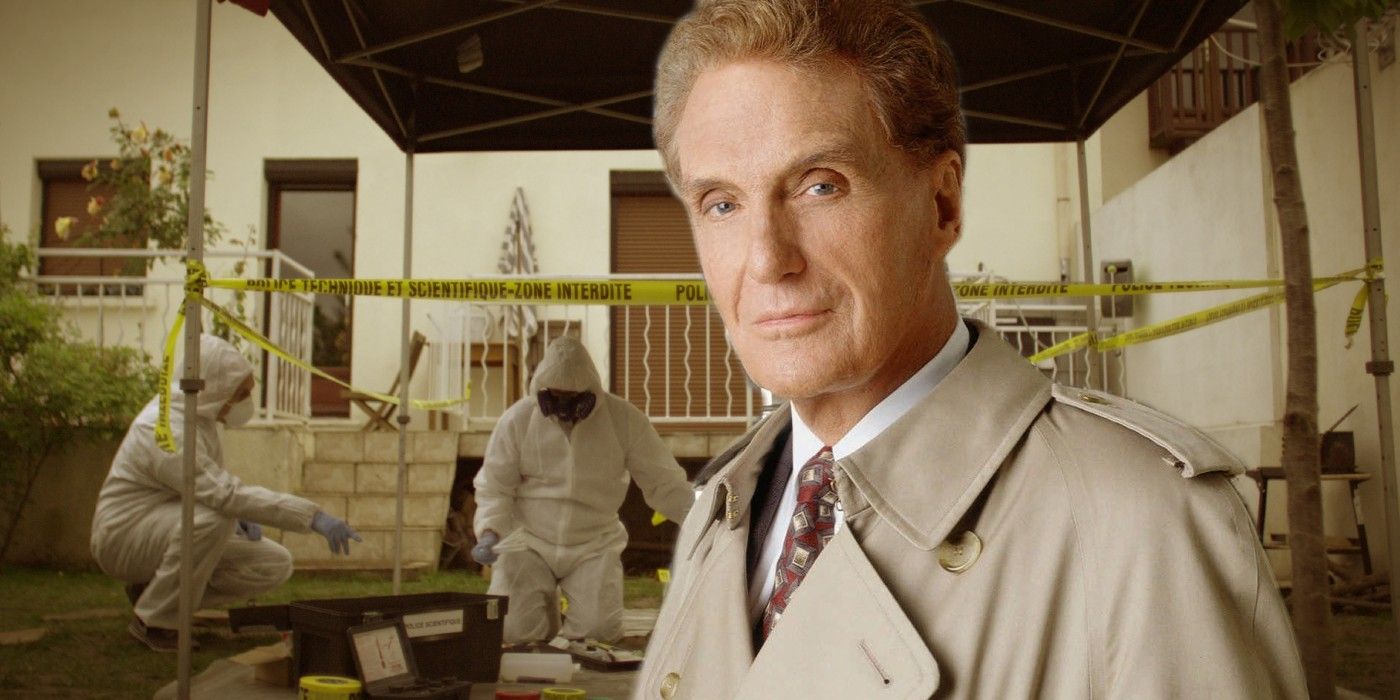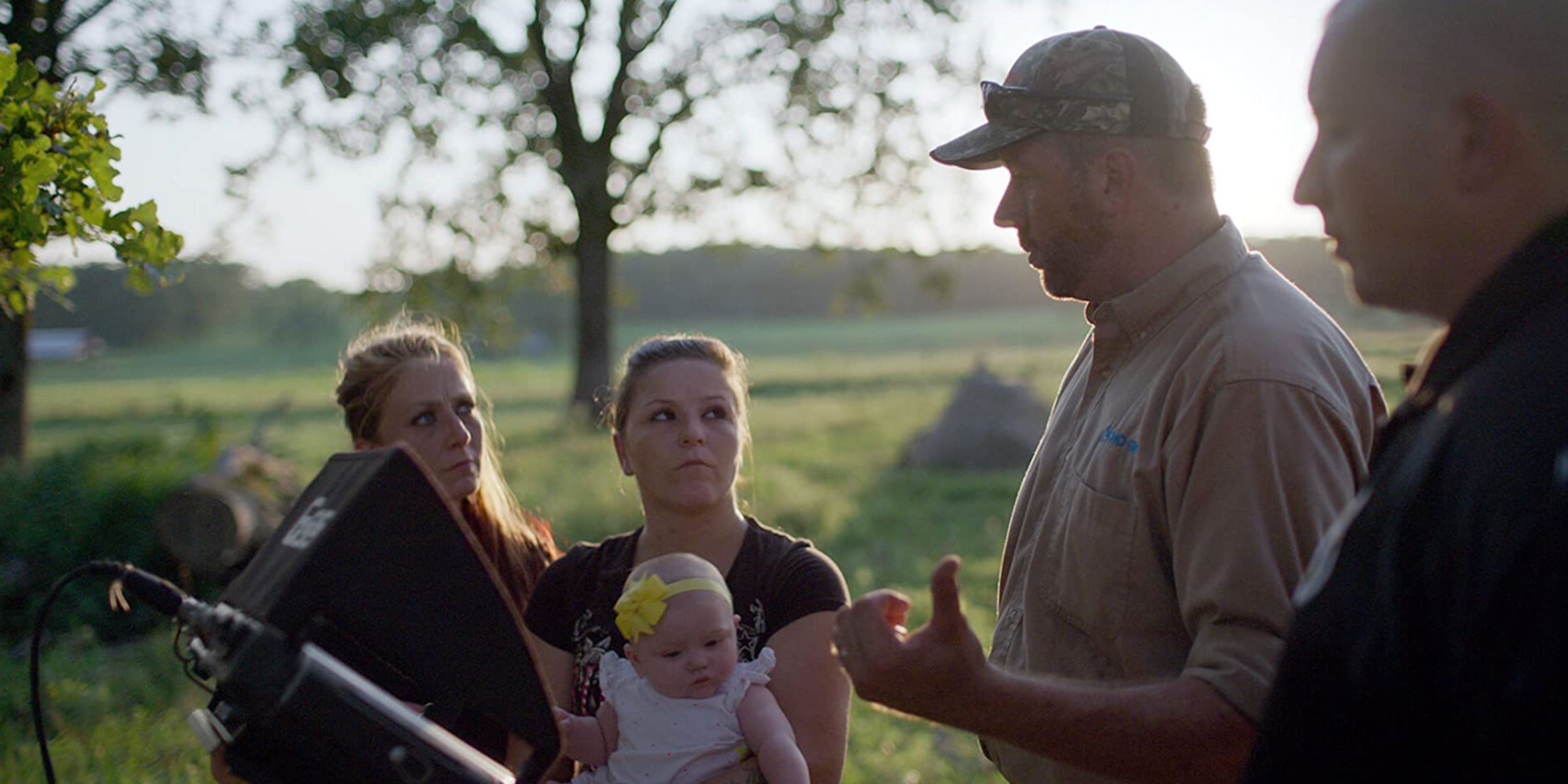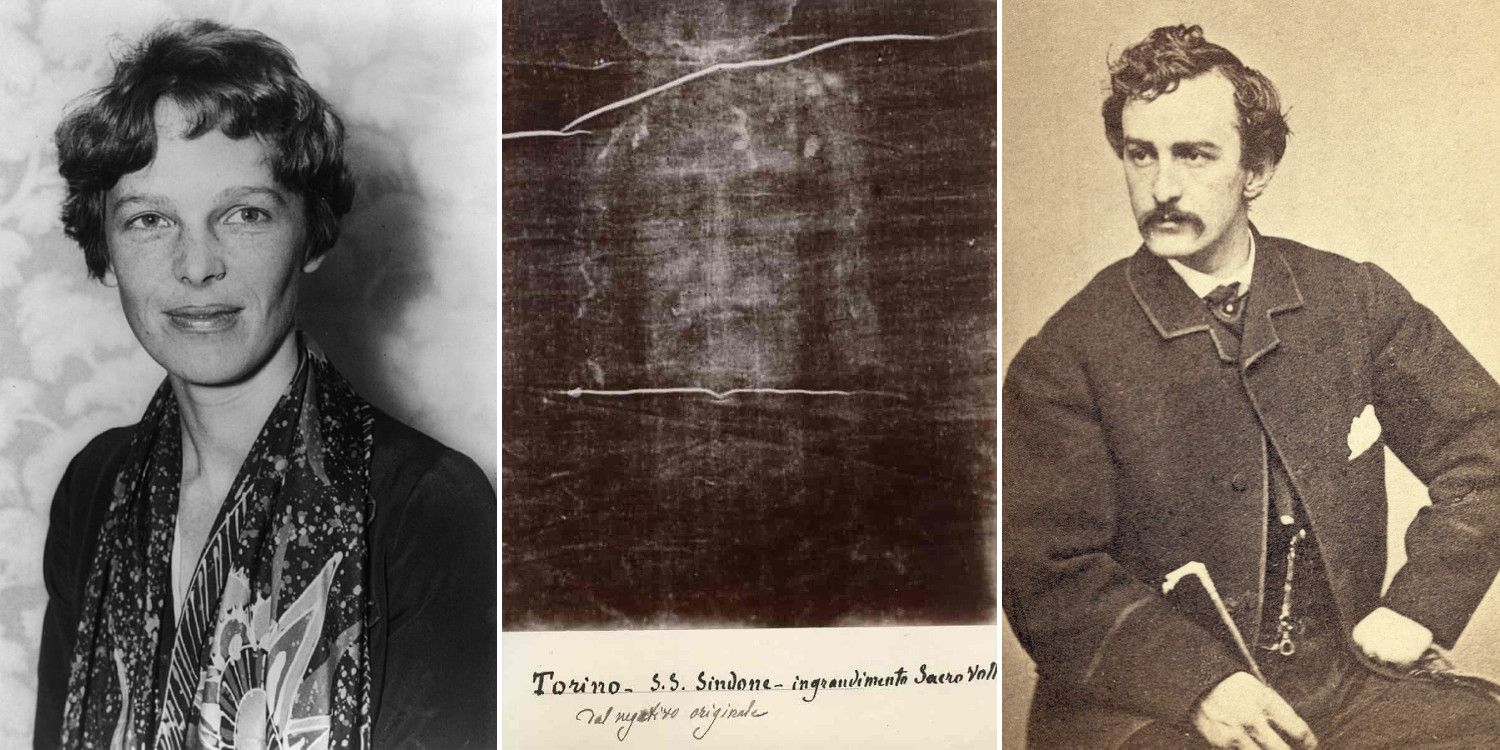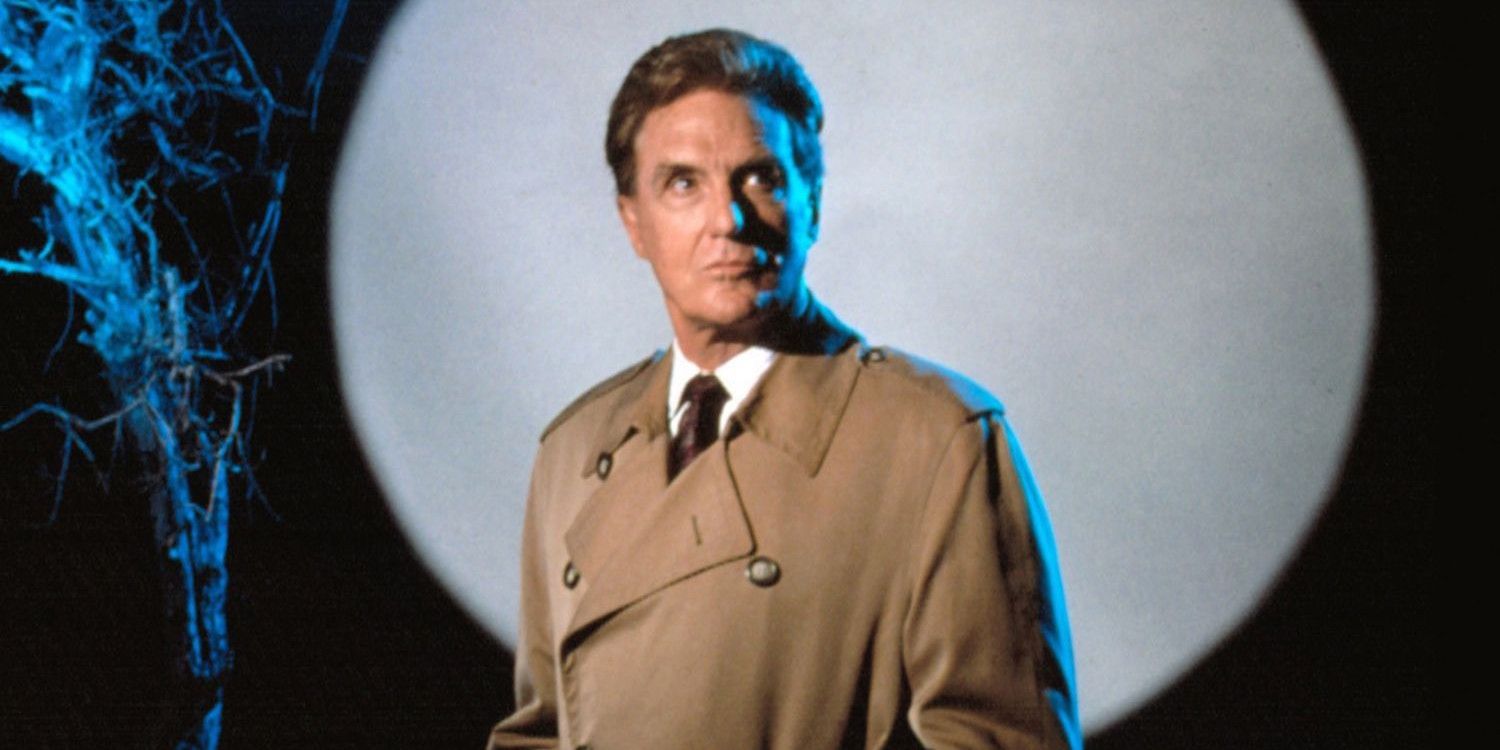While its documentary-style segments have proven well-produced, Netflix's Unsolved Mysteries does little to capture the spirit of the classic show or to distinguish itself from other true crime series. With no narrator and a surprising lack of variety to its episodes, the revival is a shallow shell of the original.
First airing as a series of seven specials in 1987, Unsolved Mysteries became a regular weekly series in the fall of 1988, with actor Robert Stack (most famous at the time for playing Elliot Ness in The Untouchables television series) acting as the show's host and narrator. Each hour-long episode typically presented three to five mysteries, most of which involved wanted criminals or missing persons. The original Unsolved Mysteries ran for 12 seasons across three networks, with the show coming to a close with Stack's death in 2003.
Unsolved Mysteries: How The Original Series Is Still Solving Cases
Spike TV attempted to revive the series with Dennis Farina of Law and Order as a host in 2008, but the new series only lasted two seasons. With that lackluster response in mind, the producers of the Netflix revival decided to try a new tactic in adapting the classic series for modern audiences by presenting the mysteries in a format that caters to the tastes of streaming audiences. While the new series seems to have captured the same audience that enjoyed earlier Netflix documentary series like Tiger King and The Ted Bundy Tapes, many fans of the original Unsolved Mysteries are cold to the revival series for a number of reasons.
Netflix's Unsolved Mysteries' Episodes Don't Have Reenactments
Each episode of the new Unsolved Mysteries focuses on a single story, contrasting with the anthology style of the original series. Another major aesthetic difference is that the Netflix series is shot in a documentary style, interviewing the people involved in each case, with little in the way of overt speculation on the part of the production team. By contrast, the classic Unsolved Mysteries made frequent use of dramatizations, with paid actors (including a young Matthew McConaughey) reenacting the events as described by the official investigation reports, as well as how the case might have occurred differently from the official narrative. Netflix's series has some reenactments of the investigation process (like the police discovering the bodies of the Dupont de Ligonnès family), but not of the actual key events.
It could be argued that Netflix's Unsolved Mysteries stays truer to the original intent of the show, which started out with the unwieldy title of Missing... Have You Seen This Person? The series was meant to be a pure true crime show, profiling missing persons and wanted fugitives with the goal of reaching a wider audience than a typical police investigation. Of the six episodes produced for the first half of the first season of Netflix's Unsolved Mysteries, only one ("Berkshire's UFO") did not involve a mysterious death or disappearance.
However, for many fans of the classic series, the dramatizations are a key part of Unsolved Mysteries' appeal. While the acting tended to be melodramatic and the special effects subpar even by the standards of 1980s broadcast television, the series still held a certain amount of camp appeal. There are also some who prefer the reenactments to the documentarian view of the new Unsolved Mysteries, feeling that the Netflix series often drags in establishing its narrative. For instance, the premiere episode, "Mystery On The Rooftop," spends roughly six minutes discussing what a great guy Rey Rivera was, including showing part of his wedding video, before beginning to detail the strange circumstances of his death.
Netflix's Unsolved Mysteries Has No Historical Or Supernatural Mysteries So Far
It was not until after the success of the first few specials that Unsolved Mysteries was broadened to include mysteries of all kinds. Beyond the typical cases involving lost loves and wanted criminals, the show also investigated the supernatural and esoteric. The original series of Unsolved Mysteries explored various hauntings and ghost sightings long before the days of Ghost Hunters and its many imitators. It also examined historical legends that were not discussed in a typical textbook.
One episode of the classic Unsolved Mysteries discussed the death of famed aviator Amelia Earhart, who vanished mysteriously while attempting to circumnavigate the globe in 1937. The episode challenged the conventional belief that Earhart and her navigator ran out of fuel and died at sea, presenting evidence that they were instead captured by the Japanese Navy and executed as spies. Another episode profiled the inconsistencies regarding the official inquiry into the death of Abraham Lincoln's assassin, John Wilkes Booth, and the theory that Booth escaped capture after the Secret Service killed the wrong man and attempted to cover up that fact. Far from a crazed conspiracy theory, the account that Booth made his way west and settled for a time in the Texas city of Granbury is well documented and considered plausible by many historians.
Perhaps the most compelling case Unsolved Mysteries ever tackled was that of the Shroud of Turin. Reportedly the burial cloth that was used to wrap Jesus of Nazareth after his death, the Shroud is imprinted with a faint image of a human body. Scientific investigation of the Shroud has yielded mixed results, with carbon dating suggesting the cloth is not old enough to be legitimate but the details of the body showing injuries consistent with those of a person who was crucified in the Roman manner; information which would not be common knowledge at the time the Shroud was discovered. Amusingly enough, the case did see an update in a later episode, where one artist presented her theories as to how a medieval artist could have created the Shroud without leaving visible brush strokes by dry brushing pigment into the fabric. This addressed one of the major mysteries regarding how the Shroud could seem so lifelike and show no signs of having been painted.
This is another area where the anthology format of the original Unsolved Mysteries proved to be a strength. The variety of stories in each episode insured the show's appeal to a wide variety of audiences. Fans of forensic investigations, lovers of a good ghost story and those looking for a heart-felt tale about lost loved ones being reunited could all find fulfillment in a single episode. The new Netflix series, by contrast, seems to cater to true crime fans and no one else.
Unsolved Mysteries Is Worse Without Robert Stack's Narration (Or Any Narration)
While Unsolved Mysteries had hosts before and after Robert Stack, the show became synonymous with his voice and image, which are considered as much a part of the show today as its infamous spooky theme song. The show is billed as Unsolved Mysteries with Robert Stack on the PlutoTV streaming channel devoted to the classic series, and the Netflix revamp paid tribute to him by putting his silhouette under the show's logo in the opening credits. Nearly every episode opened with Stack's narration, where he steadily advised viewers that "For every mystery, there is someone, somewhere, who knows the truth. Perhaps that someone is watching. Perhaps... it's you."
Filling Stack's shoes would be a daunting task for any actor, so the producers of Netflix's Unsolved Mysteries decided not to try. Terry Dunn Meurer and John Cosgrove, the creators of Unsolved Mysteries, claimed that "no one could fill Bob’s shoes" in an interview with Inverse. The sentiment was echoed by director Shawn Levy, who further elaborated upon the decision to present the new Unsolved Mysteries without a narrator.
"We have also opted for a hostless format, because the late, legendary Robert Stack was a singular and irreplaceable presence," Levy says. "In Robert’s absence, we are letting the spirit and the strength of the stories carry the narrative. Above all, our aspiration was to make a new chapter worthy of his memory and of iconic contribution to this iconic series."
While the intent to honor Stack is commendable, the new Unsolved Mysteries suffers more from its lack of narration than it ever could with a host of lesser caliber. Many of the new episodes drag at times as the camera rolls over maps and the countryside to establish the setting, and having a narrator link the various interviews would liven up some of the more awkward silences that pepper the new series. While nobody could replace Robert Stack, the show might still find a worthy successor in a narrator who could make the show their own.




